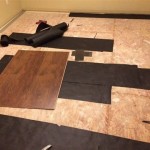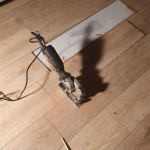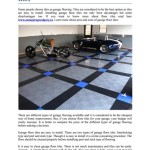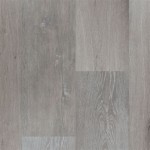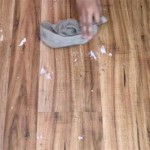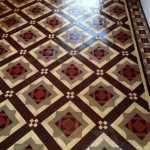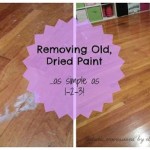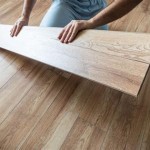How To Remove Super Glue From Wooden Floor Tiles
Super glue, also known as cyanoacrylate adhesive, is a powerful and versatile adhesive commonly used for various household repairs and crafting projects. Its quick-bonding properties are advantageous in many situations, but they can become a significant problem when it accidentally spills onto surfaces like wooden floor tiles. The fast-setting nature of super glue makes it challenging to remove, often requiring a careful and methodical approach to avoid damaging the finish or the wood itself. Removing super glue from wooden floor tiles necessitates understanding the properties of the adhesive and selecting appropriate solvents and techniques that effectively dissolve the glue without harming the underlying material.
Successfully removing super glue from wooden floor tiles depends on promptly addressing the spill. The longer the glue remains on the surface, the harder it becomes to dislodge. The adhesive bonds more strongly to the wood over time, making it more resistant to solvents and mechanical removal methods. Therefore, immediately assessing the situation and acting quickly is crucial for minimizing the risk of permanent damage and simplifying the cleaning process. This initial assessment should include determining the type of finish on the wood, if it's a sealed, varnished, or waxed surface, influence the choice of cleaning agents and techniques.
Identifying the Type of Wood Finish
Before attempting to remove super glue, the type of finish applied to the wooden floor tiles must be carefully identified. Different finishes react differently to various solvents and cleaning solutions. Applying an incompatible solvent can lead to discoloration, dulling, or even removal of the finish, causing further damage to the tiles. Common wood finishes include polyurethane, varnish, lacquer, wax, and oil-based treatments. Polyurethane and varnish finishes are generally more resistant to solvents than wax or oil finishes. A simple test can help determine the nature of the finish. Apply a small amount of mineral spirits or denatured alcohol to an inconspicuous area of the floor. If the finish becomes tacky or dissolves, it's likely a wax or oil-based finish. If the finish remains intact, it is probably polyurethane, varnish, or lacquer. Understanding this distinction is crucial for selecting the appropriate removal method.
If the finish is unknown, start with the gentlest methods first, gradually increasing the intensity as needed. This approach helps minimize the risk of damaging the wood or the finish. For instance, attempting to scrape off the super glue without any softening agent on a waxed surface would likely cause scratches and damage to the finish. However, trying a solvent like acetone on a waxed floor could dissolve the wax along with the glue. In such cases, the wax would need to be reapplied to restore the original appearance of the floor.
Methods for Removing Super Glue
Several methods can be employed to remove super glue from wooden floor tiles, each with its advantages and disadvantages. The choice of method depends on the size and thickness of the glue residue, the type of wood finish, and the availability of cleaning supplies. These methods generally fall into three categories: softening agents, mechanical removal, and heat application. It's also beneficial to begin with the gentlest method and gradually escalate to more aggressive techniques only if necessary. Patch-testing any solvent or method on an inconspicuous area of the floor is highly recommended to verify its compatibility with the finish.
Softening Agents: Softening agents work by weakening the bond between the super glue and the wood surface. This makes it easier to remove the glue without causing damage. Common softening agents include acetone, nail polish remover (which contains acetone), denatured alcohol, mineral spirits, and specialized super glue removers. Acetone is a powerful solvent that can dissolve super glue effectively, but it can also damage some finishes, particularly lacquer, shellac and wax finishes. Denatured alcohol and mineral spirits are milder solvents and may be suitable for more delicate finishes. To use a softening agent, apply a small amount to a clean cloth or cotton ball and gently dab the glue residue. Allow the solvent to sit for a few minutes to soften the glue, then gently wipe or scrape it away with a plastic scraper or a soft cloth. Repeat the process as needed until the glue is completely removed. Always ensure adequate ventilation when working with solvents and avoid prolonged exposure to the skin.
Mechanical Removal: Mechanical removal involves physically removing the super glue from the wood surface using tools such as scrapers, razor blades, or sandpaper. This method requires extreme caution to avoid scratching or gouging the wood. A plastic scraper is generally safer than a metal one. If using a razor blade, hold it at a very shallow angle to the surface and gently scrape the glue away in thin layers. For stubborn residue, a fine-grit sandpaper (400-grit or higher) can be used to gently sand away the glue. However, sanding can remove the finish, so it should be used as a last resort and only in small, discrete areas. After sanding, the area may need to be refinished to match the surrounding floor.
Heat Application: Heat can also be used to soften super glue, making it easier to remove. A hairdryer or heat gun can be used to gently heat the glue residue. Hold the heat source a few inches away from the surface and move it back and forth to avoid overheating. Once the glue is softened, gently scrape it away with a plastic scraper or a soft cloth. Be careful not to overheat the wood, as this can damage the finish or even scorch the wood. This method is most effective on small areas of glue. If heat is applied for too long or at too high a temperature, the finish on the wood may blister, crack, or peel. This risk is particularly high with varnish, lacquer, and polyurethane finishes. Therefore, it is crucial to exercise caution and monitor the wood surface closely during heat application.
Preventing Future Super Glue Spills and Protecting Your Floors
Prevention is always preferable to remediation. Taking proactive measures to prevent super glue spills can save time, effort, and potential damage to wooden floor tiles. To proactively minimize the chance of glue ending up on the floors in the first place, covering the work area with a drop cloth or protective sheet when using super glue can catch spills and prevent them from reaching the floor. Working in a well-lit area will allow better visibility of the work surface and prevent spills due to poor visibility. Additionally pouring a small amount of glue onto a separate disposable surface and using an applicator to apply the glue to the project can minimize the risk of accidental spills.
Regular maintenance and cleaning of wooden floor tiles can also help prevent super glue from adhering strongly to the surface. A clean, well-maintained floor provides a less porous surface for the glue to bond to, making it easier to remove if a spill occurs. Dusting and sweeping the floors regularly removes debris and dirt that can create a rough surface, allowing the glue to penetrate deeper. Applying a protective coating or sealant to the floor can also create a barrier that prevents the glue from directly contacting the wood. This sacrificial layer can then be cleaned or replaced without damaging the underlying wood.
Beyond preventative measures related to application, storing super glue properly can also minimize the risk of accidental spills. Keep super glue in a secure location away from children and pets. Ensure the container is tightly sealed to prevent leaks or evaporation. When using super glue, avoid applying excessive amounts, as this increases the likelihood of drips and spills. Instead, apply a thin, even layer of glue to the intended area. By following these preventive measures, the risk of super glue spills on wooden floor tiles can be significantly reduced, preserving the beauty and integrity of the flooring.

Removing Glue Or Adhesive From Hardwood Floors The Speckled Goat

Removing Glue Or Adhesive From Hardwood Floors The Speckled Goat

Removing Glue Or Adhesive From Hardwood Floors The Speckled Goat

Easily Remove Super Glue From Any Surface With This Household Staple

Removing Parquet Flooring Floor Adhesive Lessons Learned Life After 40

How To Remove Super Glue From Laminate Flooring 14 Steps

How To Remove Glue From Tile Floor An Expert Guide Alsyed Construction Company Stan

Remove Super Glue From Hardwood Flooring

Removing Glue Or Adhesive From Hardwood Floors The Speckled Goat

How To Remove Glue From Laminate Flooring
See Also
